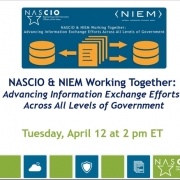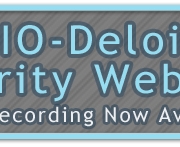This presentation outlines the four pillars of a Holistic Enterprise Architecture: architectural models, framework, methodology, and implementation/solution models. It also explains the business and technology gains, and demystifies the practice of implementing a successful Holistic Enterprise Architecture.
Agenda:
- The Four Pillars of Holistic Enterprise Architecture
- Business and Technology Gains Achieved through Enterprise Architecture
- How to Implement Successful Holistic Enterprise Architecture
Host:
Eric Sweden,
Program Director, Enterprise Architecture & Governance
NASCIO
Presenter:
Samuel B Holcman
Pinnacle Business Group, Inc.
Enterprise Architecture Center Of Excellence (EACOE)
Business Architecture Center Of Excellence (BACOE)
Summary:
This presentation outlines the four pillars of a Holistic Enterprise Architecture: architectural models, framework, methodology, and implementation/solution models. It also explains the business and technology gains, and demystifies the practice of implementing a successful Holistic Enterprise Architecture.
It is only within the past 20 years that we have begun to develop an art and science for identifying and defining the graphical and textual descriptions of whole enterprises. Until this time, any art or science that we had related to this endeavor pertained to parts of enterprises – for example, organizational design and/or systems development. Because the focus of this presentation is on Enterprise Architecture, have there been successful enterprises that were never architected?
Yes. However, they were successful in relation to other non-architected enterprises. Moreover, the pace of change was slower in the industrial age, compared with the information age of today. Contemporary enterprises have to be able to adjust much more rapidly to meet changing demands in the face of global competition. This makes it critical to have readily available descriptive representations of one’s enterprise to use as a basis for making change.
The age-old question now arises in enterprises:
- How can one change something that one cannot “see”?
- How does one “see” an enterprise?
This is Holistic Enterprise Architecture.
DISCLAIMER
NASCIO makes no endorsement, express or implied, of any products, services, or websites contained herein, nor is NASCIO responsible for the content or the activities of any linked websites. Any questions should be directed to the administrators of the specific sites to which this publication provides links. All critical information should be independently verified.
This project was supported by Grant No. 2010-DJ-BX-K046 awarded by the Bureau of Justice Assistance. The Bureau of Justice Assistance is a component of the Department of Justice’s Office of Justice Programs, which also includes the Bureau of Justice Statistics, the National Institute of Justice, the Office of Juvenile Justice and Delinquency Prevention, the Office for Victims of Crime, and the SMART Office. Points of view or opinions in this document are those of the author and do not necessarily represent the official position or policies of the U.S. Department of Justice.
Files:
Download Audio







